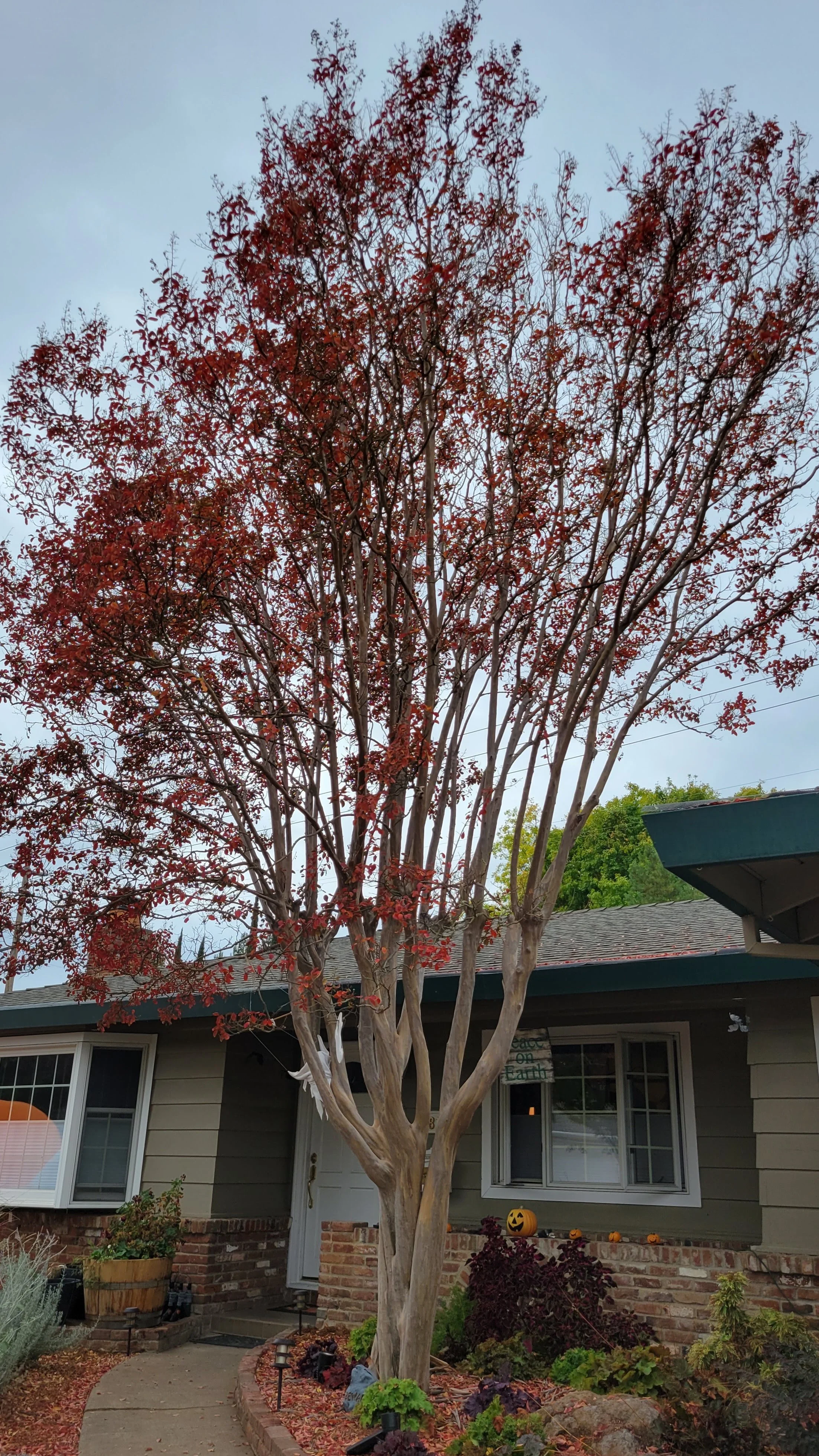DYE AND FIBER GARDEN TOUR
Crepe Myrtle
Crepe Myrtle is related to Eucalyptus. Have you noticed that the bark peels in a similar way?
If you have a Crepe Myrtle, you may have noticed that the leaves will discolor your concrete driveway or sidewalk after it rains, then the discoloration washes out with the next rain. The tannins will be permanent, however, on properly pre-treated natural fabrics and paper.
The natural plant tannins are strongest in the fall, so I typically wait until the leaves turn red and start to fall before using them for ecoprinting. The bark is also tannin-rich, and I've used it as well. I've learned that a little goes a way!
Artwork using Crepe Myrtle.
One Halloween I hung a home-made cotton jersey ghost in the tree. When the weather turned stormy I tied it to a limb so it wouldn't blow away. The result was an eco-printed ghost!
In the eco-printing and natural dying world, the experts will tell you to use only protein ( wool, silk) or natural cellulose fabric (cotton, linen, ramie) - NEVER something synthetic like polyester.
HA! Watch me.
In the summer of 2022 I was doing a lot of experimenting with eco-printing and rust dying. After rust-dying a light steel-blue polyester pillowcase, I soaked it in vinegar and wrapped it around an iron pipe with Crepe Myrtle leaves. I bound it tightly, put it in a black garbage bag and set it out on the rocks by the waterfall in my back yard. At the end of that 100 -degree summer day, the transformation was complete.
Into the Woods was juried into the 2023 Hot and Cold Wax Artists of California Exhibit at Blue Line Arts in Roseville California.
Into the Woods, 10 X 20
Available for Purchase here




